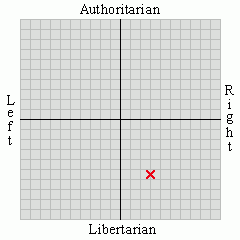 Twenty years ago (actually twenty years and three days ago), less than seven miles from where I'm writing this post right now, that a B-2 bomber took off on its maiden flight. The government didn't buy as many of them as originally thought and they haven't seen as much use as originally envisioned -- which is good, because they are instruments of war. It's not clear exactly how much they helped bring down the Soviet Union after they were created since the internal erosion of the USSR was well underway despite the fact that we in the West didn't know about it until September and October of that year. But it does seem that the B-2 was better than anything the Soviets had, and Soviet intelligence was surely passing that message on to the leaders who realized that they had been hopelessly outclassed, at a time that they knew they could not afford to play catch-up. In a way, the Apollo 11 landing in July of 1969, the first "first" for the Americans over the Soviets in the space race, started a process of the U.S. gaining superiority over the Soviets that perhaps culminated in the B-2's launch. Shortly after the sinister black flying wings proved operationally capable it became evident that they could fly anywhere in the world with effective impunity. Along the way, research and development to create the B-2 advanced composite materials technology that today is used to create things from satellites and weapons to bicycles and convection ovens that must be strong, light, and heat-resistant. And they're really cool-looking, too. Amazing that these airplanes, still the most impressive thing in the skies, are twenty years old and still a significant part of our military arsenal despite the original mission of the aircraft becoming obsolete only two years after the maiden flight. It's important to remember that the development of new technologies is something that should be done even if the immediate military mission of the technology is something that seems short-lived.
Twenty years ago (actually twenty years and three days ago), less than seven miles from where I'm writing this post right now, that a B-2 bomber took off on its maiden flight. The government didn't buy as many of them as originally thought and they haven't seen as much use as originally envisioned -- which is good, because they are instruments of war. It's not clear exactly how much they helped bring down the Soviet Union after they were created since the internal erosion of the USSR was well underway despite the fact that we in the West didn't know about it until September and October of that year. But it does seem that the B-2 was better than anything the Soviets had, and Soviet intelligence was surely passing that message on to the leaders who realized that they had been hopelessly outclassed, at a time that they knew they could not afford to play catch-up. In a way, the Apollo 11 landing in July of 1969, the first "first" for the Americans over the Soviets in the space race, started a process of the U.S. gaining superiority over the Soviets that perhaps culminated in the B-2's launch. Shortly after the sinister black flying wings proved operationally capable it became evident that they could fly anywhere in the world with effective impunity. Along the way, research and development to create the B-2 advanced composite materials technology that today is used to create things from satellites and weapons to bicycles and convection ovens that must be strong, light, and heat-resistant. And they're really cool-looking, too. Amazing that these airplanes, still the most impressive thing in the skies, are twenty years old and still a significant part of our military arsenal despite the original mission of the aircraft becoming obsolete only two years after the maiden flight. It's important to remember that the development of new technologies is something that should be done even if the immediate military mission of the technology is something that seems short-lived. That debate is going on now in Washington over the F-22; American air superiority right now appears to be so far ahead of anything anyone else has that there is no point to building a next-generation air-to-air fighter. Zero American F-15's have been shot down by either surface-to-air missiles, flak, or enemy aircraft; the F-15 is undefeated and the only planes we've lost have been to maintenance problems, pilot error, and foreign object damage like bird strikes. After a very short time before both wars against Iraq, air superiority fighters have turned into mini-bombers since it didn't take long for our massive airpower to own the skies. So why do we need a new generation of air superiority fighters at all, when the existing planes seem to work just fine? The answer is, we don't know and we can't know because we can't predict the future. We don't know if the Russians or the Chinese or someone else is going to come up with something we haven't thought of us and putting the best birds we can into the air is the way we stay ahead of the power curve. We don't ever want to be in the position the Soviets were twenty years ago, realizing that our adversaries have something we can't do anything about.
The B-2 was expensive in 1989 -- Democrats began measuring good social spending in two-billion-dollar units of "the price of one B-2 bomber" -- and the F-22 is expensive now. But being the world's foremost military power is something that cannot be overvalued. We have several keys to this enviable position: two oceanic borders, a strong economy and a strong educational system, plentiful domestic natural resources, the ability of our infantry to fight at night, and owning the seas and the skies wherever we choose to extend our power. Yes, it's expensive, but we must keep these things. That means we need to keep innovating, keep improving, and keep our adversaries so far behind us that there is no point to resisting our military might.
This sounds bad to some people, but consider the alternative.







No comments:
Post a Comment